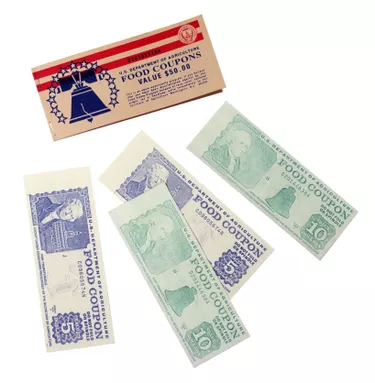
The federal food stamp program is called SNAP (Supplemental Nutrition Assistance Program). The program helps low- to moderate-income individuals and families purchase food. SNAP requires documentation from applicants to determine eligibility and benefit level, according to the U.S. Department of Agriculture (USDA).
Eligibility Requirements
Video of the Day
You are eligible for SNAP benefits if your countable resources do not exceed $2,000 ($,3000 if at least one household member is over 60 or disabled). Countable resources include your bank account and, in some cases, your vehicle. Your vehicle is only a countable resource if there is over $1500 of equity in it. Your home and your furniture are not countable resources. Your net income cannot exceed 130 percent of the federal poverty level and your gross income cannot exceed 100 percent of the poverty level, according to the USDA.
Video of the Day
Proof of Identification
You are required to provide two forms of identification: a birth certificate and picture identification such as a driver's license. If you are not a U.S. citizen, you need proof of your non-citizen status. U.S. citizens must provide the Social Security numbers for every member of the household, according to the Getting Snap website.
Proof of Income
SNAP requires proof of income (pay stubs) for at least one month before you apply, according to the Getting Snap website. You must also document any child support you receive and for whom. You can receive SNAP benefits for only three months in a 36-month period if you do not have a job and you are able-bodied, have no dependent children and are between ages 18 and 50. Those 16 to 60 must try to find work, accept employment and participate in training programs or they will be disqualified from SNAP.
Proof of Expenses
Your expenses are deducted from your income to determine the amount of SNAP benefits you'll get. SNAP allows a standard deduction of $142 for households with fewer than three members and $153 for households with four or more members. Applicable SNAP expenses are deducted. These include shelter (rent or mortgage, utilities and a base fee for one telephone), child support payments, medical expenses (for elderly or disabled members) and dependent child care expenses (only if you work or go to school), according to the USDA.
Allotment
The amount of food stamps you receive is called your "allotment," according to the USDA. The maximum allotment for a family of one is $200; it is $367 for a family of two; it is $526 for a family of three; the maximum allotment for a family of four is $668; it is $793 for a family of five; it is $952 for a family of six; it is $1,052 for a family of seven; it is $1202 for a family of eight; and for each additional person, the allotment increases by $150, according to the USDA.
Time Frame
In most states, a decision is given in 30 days. In 2000, the Department of Agriculture extended the application processing time from 30 to 45 days; but most states still process applications within 30 days. If your application is denied, you can request a "fair hearing" and attempt to change the decision, according to the USDA.